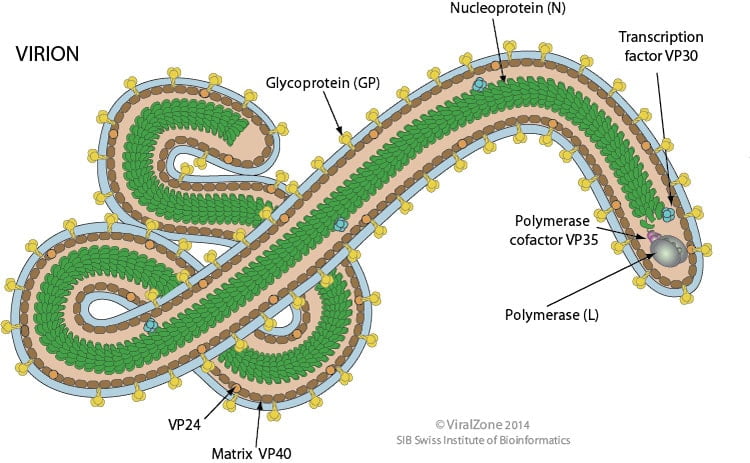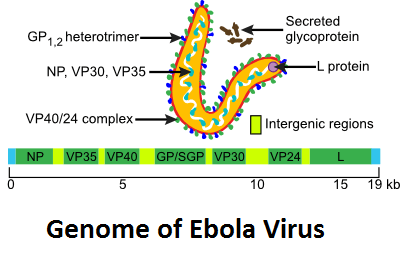
- Ebola Virus are generally approximately 80 nm in diameter, 970 nm long.
- They are cylindrical/tubular, and contain viral envelope, matrix, and nucleocapsid components.
- The virus generally appears in a long, filamentous form, but it can also be “U-shaped,” in the shape of a “6” (the “shepherd’s crook” appearance), or even circular.
- They have a virally encoded glycoprotein (GP) projecting as 7-10 nm long spikes from its lipid bilayer surface.
- Glycoproteins are proteins that contain carbohydrate chains (glycans) covalently attached to their polypeptide side chains, a process known as glycosylation.
- The glycoprotein GP is the sole resident of the Ebolavirus surface and is responsible for attaching to and entering new host cells.
- The outer viral envelope of the virion is derived by budding from domains of host cell membrane into which the GP spikes have been inserted during their biosynthesis.
- This virus belongs to the Filovirus family, and structurally it resembles a length of thread.

Genome of Ebola Virus

- Ebola Virus have a negative-sense, non-segmented single stranded linear RNA genome about 18-19 kb in size.
- The 3′ terminus is not polyadenylated and the 5′ end is not capped.
- It contains approximately 19,000 base pairs.
- It encodes seven structural proteins: nucleoprotein (NP), polymerase cofactor (VP35), (VP40), GP, transcription activator (VP30), VP24, and RNA polymerase (L).
Read Also:
Replication of Ebola Virus
Signs and Symptons of Ebola Virus Disease
